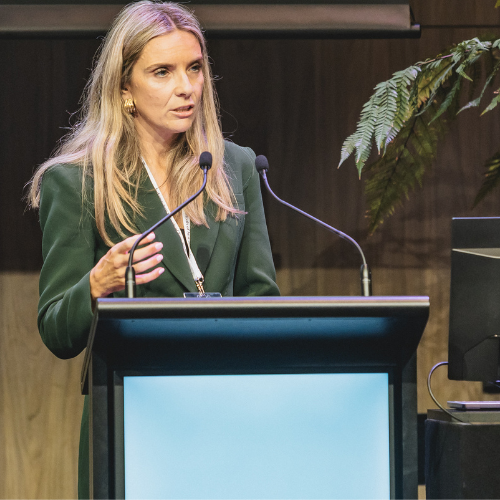



Huanui College alumni member Connan Wiegersma gives us a wave, telling of his experience joining the Royal New Zealand Navy.
Connan graduated from Huanui College in 2022 and joined the Royal New Zealand Navy (RNZN) on 19th February 2023. He was part of the year’s first intake, completing the Basic Training Courses over a 16-week period. Training involved completing a series of fitness tests such as the beep test, where he had to get 11/1, plus 10 pull-ups, 40 pushups, 40 crunches, and a 200m fin test which involves swimming in the pool for eight minutes wearing fins. Besides physical tasks, Connan also had to learn basic Navy skills like knot tying and shooting, in addition to learning about naval history. “There were a lot of teamwork exercises. Supervisors drill the hell out of you with the rules, and then, as soon as you progress, and show you are willing, they are nicer and they won’t look for reasons to give you remedial training, which is like detention. They make you run up the stairs, go to your room and get changed into all wet weather gears at random times. I did a few.
“If one person mucks up, everyone mucks up and does the detention.”
According to Connan, there is a high demand for this job – the RNZN needs numbers. Some people are into it for the money, he says, and it appeals to those without many responsibilities at home. For Connan, Whangārei diving centre was a random activity which he enjoyed immensely; and it consolidated his yearning to join the Navy. “I wanted to go to the Navy to travel the world and get paid for it.” The selection process was no easy feat, especially as Connan was completing the process whilst still in school. Connan had to endure a multitude of tests and exams at the naval base in Devonport to prove himself. “On Day 1, I completed a psych and fitness test. On Day 2, I used the dip tank. It’s a confined space where you dive and anyone can watch you. I had to dive there to show confidence. Then I hopped in the ocean to practise using dive gear. Next, we had to complete team exercises to show we could work with other people. Then we were filed into a room and were told whether we were under selection or denied.” Connan’s recruiter was the one who made the call to let him know he was successful. “I was stoked!”
Connan’s recruiter suggested trades to consider. In particular, they suggested diving due to his fitness levels being so good, and because diving offers many opportunities. For example, if Connan chooses the commercial diving route, he could work spending six months at a time diving around oil rigs, completing underwater welding and construction. “You can lay concrete underwater, it’s piped down a half set. This is the commercial side of diving.”
A typical day in the Navy varies, Connan says. Usually he wakes up at seven am, gets ready for work, heads off for physical training from eight am to nine am, then breaks for half an hour before prepping the dive boat and gear. Then he gets diving! An important job is checking the ship and cleaning it. Ships also need maintenance, so he has to clean out the sea chests that cool the engines if they have been at sea for a while. “Hull cleans can take up to two weeks, depending on the size of the ship and the amount of growth on it. I can last about two and a half to three hours on a set of twin cylinders. You’re underwater the whole time unless there is an emergency.” But you’re not alone down there. Connan says,
“During maintenance you have to scrub and get these barnacles off. Suddenly you’re surrounded by fifty snapper trying to eat the barnacles.”
There are lots of opportunities for learning how to deep dive in the Navy. Connan completed Part One at Huntly over five weeks, where he learned to scuba dive to 30m with CABA (normal cylinders on the back). Once that’s done, there’s another course, Part Two: Surface Supplied Breathing Apparatus (SSBA) to 30m using the helmets. Part Three involves wearing the helmets to 50m.
If you’re wondering what it’s like at 50m, Connan says, “It’s quite dark and cold. We wear suits with a 3mm wetsuit underneath. Over those, we wear denim coveralls with hoses pumping hot water around.” Divers are also carrying a tank on their back, a bailout cylinder, which is connected to the main umbilical coming from the surface. “It’s connected directly to our helmet, we can open a dial on the side of our helmet in case our air from the surface gets cut off and we need a secondary supply.” On the surface is the coxswain, the supervisor and standby diver for emergencies, and someone else to help the diver in the water when needed. There is a communication line setup between the members on the boat up above and the diver at 50m. “The communication line is braided into our breathing hoses (umbilical). The helmets have an air panel setup so they can talk normally. It’s clear comms.” Connan says. “It’s a phone line with a plug in each end.”
“With the water pressure at 50m on you, your voice gets squeaky – like you are on helium – you can hear this! The first time I went down and spoke, I died of laughter because I didn’t know how squeaky it was!”
It can also be an amazing feeling deep diving – everything turns funny.” Diving is a dangerous business, so communications are a necessity. “The deeper you go, the more chance you get of getting Nitrogen Narcosis. Everyone gets it. The faster you go down into the depths, the faster you get it. It can be dangerous. You are completely out of it, so you have to go slow and careful. We have cameras on the helmets so the supervisors can tell you to snap out of it if they notice you starting to get it!”
In addition to the serious times, there are hilarious moments. Connan describes a highlight from his Basic Training Course: “We got these white shirts: ‘Trop Shirts’, and white service caps like a bowl on our heads, with black PT shorts, and shiny dress shoes. This was our ‘rig’. Billie Jean was playing. We were instructed to get into this rig, and moonwalk past our instructors.” Our supervisors were dying of laughter – they told the group to do it in one of the remedial training sessions.” Connan reflects on how his relationship with the supervisors positively changed throughout training. “The first day they are yelling at you and you don’t like them. As training continues, you like them more. They are weeding out the lost links in the chain.”
Connan is based in Devonport. He sleeps at the accommodation on base in the barracks. “They (the supervisors) come in for rounds to make sure you’ve made your bed and everything looks tidy. In September I’m moving out, we are flatting nearby.”
Aside from all the seriousness and shenanigans of the Basic Training Course for the Navy, Connan’s ultimate message when it comes down to deciding to join the RNZN is simple:
“You have to like the water for this job. And have tough skin. The instructors will make you fold. Don’t let the pressure get to you. It’s worth getting through the so-called sixteen weeks of ‘hell’ and then everything chills out after that.
Recently, Connan returned from Australia where he was representing the NZ Navy playing hockey. “We had a two-week tour of Aussie playing the Australian defence force teams. Throughout the tournament, we ended up getting equal 3rd with the NZ Airforce. I attended the 2024 ANZAC Day ceremony at HMAS Creswell in Jervis Bay, three hours south of Sydney. Experiencing it in another country was something I never thought I’d be able to do.”
If anyone has questions about joining the RNZN, Connan is open to chatting about prospective placements, so please contact Ordinary Diver Wiegersma (official title).
Written and curated by Tracie Lark
This article was mistakenly published under the name of Huntley School instead of Huanui College. ISNZ sincerely apologises to all parties concerned.










